ooga booga | online shop | back to books | ordering info | view cart |
|
 |
_Quarterly Issue 9: Administrative Comments from the Chicago Office Issue 9 is an investigation of three revolutionary-based groups united at their essence in a fight against governmental and societal oppression. The institutions in question are specifically targeted due to their treatment and relationship with minority and non-upperclass citizens in the United States of America. Administrative Comments from the Chicago Office, contains content acquired from original communiques from, and FBI files on, both the Weather Underground and The Black Panther Party. Content is also derived from the Occupy Wall Street Twitter, blog, and newspaper, as well as the NYPD's Twitter and YouTube accounts of the mass arrests during Occupy Wall Streets first month of existence in Lower Manhattan. Administrative Comments from the Chicago Office is an edition whose historically based content is both changing as it is solidifying, while it concurrently interprets the perceivably solidified.ets first month of existence in Lower Manhattan. Administrative Comments from the Chicago Office is an edition whose historically based content is both changing as it is solidifying, while it concurrently interprets the perceivably solidified. With contributions from Justin Sloane and Jesse Hlebo. |
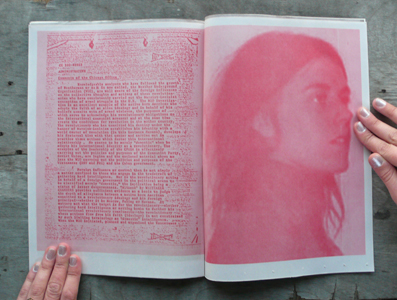 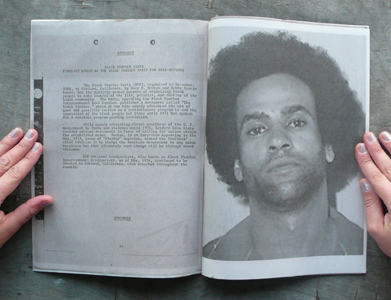 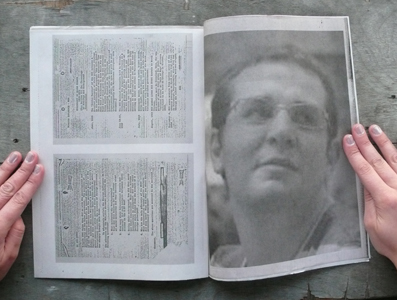 |
|
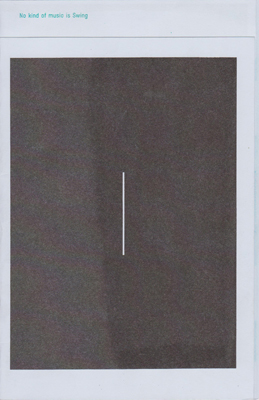 |
_Quarterly Issue 8: No Kind of Music is Swing Utilizing research as the medium for creation, rather than the basis, No Music Is Swing culls all of its content from music publications prior to 1950: the first five issues of Downbeat magazine, The Academician, and texts on fictional composers. All of the texts are modified in some way, whether structurally, contextually, or formally, to create the final work. No Music Is Swing creates an abstracted taste of what rhythm might be able to achieve, yet, in theory, rhythm can never swing, at least as a musical form. With contributions from Justin Sloane and Jesse Hlebo. |
 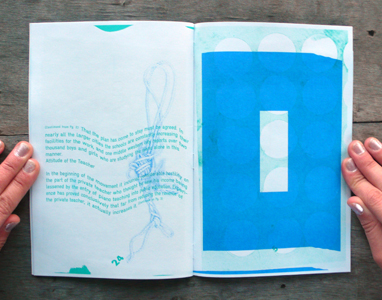 |
|
 |
_Quarterly Issue 5/6: Aural Marks Utilizing the structural removal of architecture from its native three-dimensional environment into a two-dimensional representation, similarly relates to the structural displacement of music and notation. These foundational points of reference were the basis for the artists involved in _ Quarterly 6. The removal of experience through documentation, and the form in which that documentation takes as a result, is a fascinating ground in which to envision the concurrent relationships of physical and aural, flat and dimensional. I provided images of an empty gallery space taken at The Elizabeth Foundation for the Arts as a reference point for the artists. This series of four, spot color offset printed, newsprint posters was commissioned in collaboration with Showpaper, with the intention that throughout the upcoming exhibition, the printed pieces would be re-united with their original space; and in so doing create a form of 'music', in the sense of a contained set of sounds. With contributions from Lewis Kopenhafer, Jason Diamond, Justin Sloane, Jesse Hlebo, and Joe Ahearn. |
 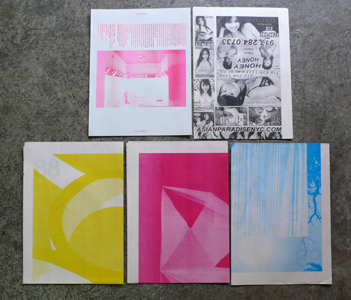 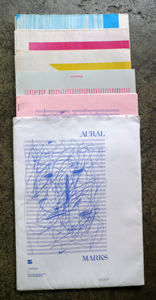 |
|

|
_Quarterly |
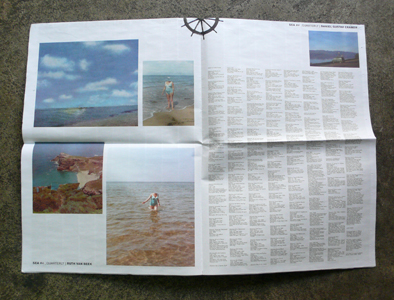 |
|